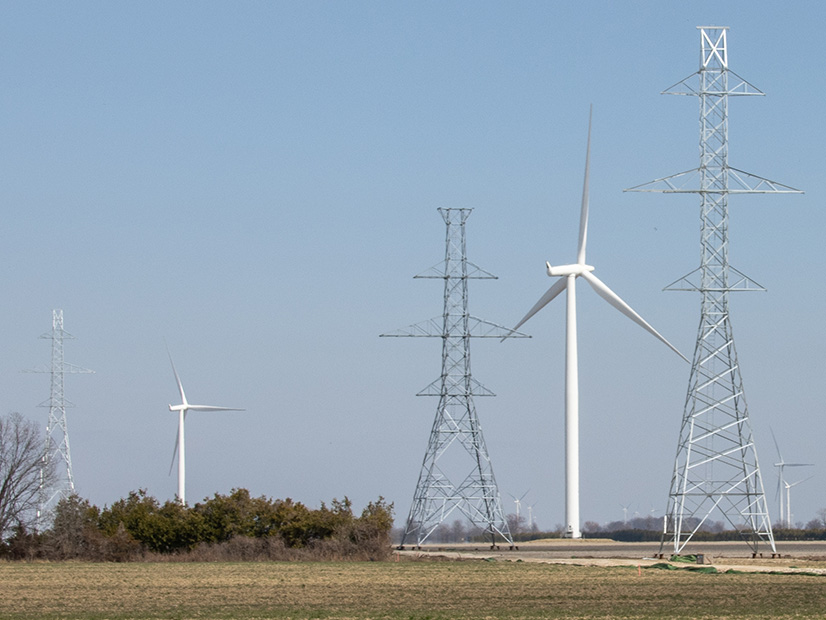Fixing the interconnection process to speed up the development of new generation could add $100 billion in economic benefits, according to an analysis released Nov. 21 by Advanced Energy United.
Improving interconnection processes around the country could lead to $57 billion in economic benefits and 667,000 job-years from increased solar energy deployment and $42 billion and 376,000 job-years from increased onshore wind deployment, according to the report, “How Interconnection Reform Can Accelerate Clean Energy Deployment.”
“Our nation’s electricity demands are growing, and these broken interconnection processes are standing in the way of Americans building the energy projects we need to thrive,” AEU CEO Heather O’Neill said in a statement. “Fixing interconnection would unleash job-creating energy projects and deliver an economic boom in states across America. If states can more quickly build the poles and wires needed to connect new electricity resources to the power grid, they will unleash their economic potential, lower electricity bills for residents and improve energy reliability for all.”
Generators coming online in 2023 averaged five years in the queue, from when they requested interconnection to commercial operation, compared to an average of just two years from 2000 to 2007.
FERC has attempted to address the issue with orders 2023 and 1920, and the report argued that states can support and build on those efforts by engaging in implementation and pushing for supplemental reforms.
“In the United States, almost 2,500 GW of non-emitting power generation and energy storage capacity are seeking to interconnect, equivalent to double the capacity of all generation sources currently online in the United States,” the report says. “Legacy interconnection processes were established decades ago to individually evaluate a small number of large, predominantly coal and natural gas power plant proposals, and these processes are ill-suited to evaluate thousands of more geographically distributed wind, solar and energy storage projects.”
The precise impacts of speeding up the queues will take years to play out, but the report offers an illustrative analysis showing how accelerating them can benefit the economy.
Under one of the scenarios, attrition of projects initially increases by 25% this year, which reflects a “purging” of the queues prompted by Order 2023’s higher financial requirements. But as additional improvements play out, project attrition is expected to fall by 50% from historic rates, while a business-as-usual case would see a 10% increase.
The report includes state projections (for the Lower 48 except Texas) for projects getting through the queue quicker and what benefits that would bring to their economies.
“Results vary between states, which is to be expected, as interconnection requests reflect renewable energy resource potential, state policy support and local project development considerations such as land availability, perceived permitting complexity, local construction costs and more,” the report said. “Nonetheless, each state sees incremental renewable energy deployment with interconnection reform.”
For most states, implementing changes will lead to an appreciable increase in renewable projects, with California, for instance, seeing 147 TWh in additions by 2030, compared to 112 TWh under business as usual.
One clear group of exceptions is those states banking on large offshore wind contracts — Connecticut, Delaware, Maryland, Massachusetts, New Jersey and Rhode Island — for most of their incremental renewable growth. The successful deployment of offshore wind depends on other factors, the report says.
“In a few states, successful interconnection reform leads to a significant increase in renewable generation such that generation in 2030 exceeds state [renewable portfolio standard or clean energy] requirements,” the report says. “New Mexico and Arizona show renewable energy generation increases that outstrip state requirements, showing that each state is well positioned for exporting first-rate solar and wind-generated electricity.”
The report suggests that states advocate for transmission providers to build trunk lines that aid interconnection and fast-track interconnection requests that are proposed for areas with available grid capacity.
It also suggests tailoring analyses to requested levels of interconnection (capacity- or energy-only), standardizing study assumptions, evaluating alternatives to traditional transmission upgrades, using automation, and using independent monitors to oversee the process and recommend improvements.
Another suggestion is to expedite construction of needed upgrades by adopting industry best practices and proactively addressing supply chain constraints.
“By engaging directly with FERC, pursuing available federal funds and calling on their regional grid operator to fulfill their responsibility to provide reliable and low-cost electricity, states can maximize economic opportunities made possible by more abundant solar and wind projects,” O’Neill said.




